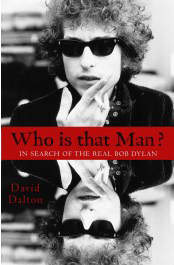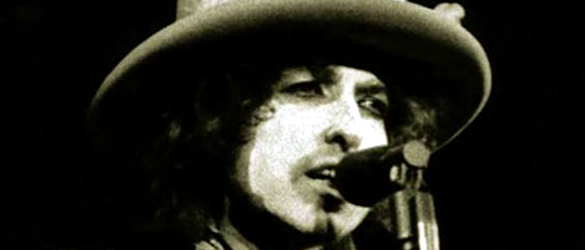“For I is someone else,” wrote Arthur Rimbaud in one of his famous “seer letters” of May 1871. “If the brass awakes as a horn, it can’t be to blame.” France was just out of its war with Prussia, and Paris was controlled, for the rest of the month at least, by the Marxist Commune. Living in his childhood town, Rimbaud seems to have gone mad from boredom as uncertainty swirled in the capital. This was a year into the precious five in which he would write all the poetry he would ever write, and the surrealist savant was already furiously marching into the “unknown by a derangement of all the senses.” On his path to becoming a secular “seer,” Rimbaud claims to have known himself well enough to see his own thoughts with a degree of removal. “I’m around for the hatching of my thought: I watch it, I listen to it.” You can’t help who you are, he contended, but you should at least realize how vapid that self of yours really is. “It is wrong to say I think: one should say I am thought.”
“When I read those words, the bells went off,” wrote Bob Dylan of Rimbaud’s letter in his “autobiography,” Chronicles. “It made perfect sense.” In March of 1965, thirty-five hundred Marines landed in South Vietnam. Two weeks later, Dr. Martin Luther King Jr. marched from Selma to Montgomery, Alabama with thirty-two hundred protestors as the Civil Rights movement gained real traction. Later that month, Dylan released Bringing It All Back Home, kicking off his “neon Rimbaud” phase as David Dalton terms it in his new book, Who Is That Man? In Search of the Real Bob Dylan (Hyperion, 2012) Dylan was also deranging his senses—with speed, marijuana and fame—and writing lyrics that were “almost a direct transcription of how his mind works.” He was seeking refuge from “the smoke rings of [his] mind,” “the twisted reach of crazy sorrow,” as “Mr. Tambourine Man” puts it. The listener of Bringing It All Back needs only to sit with Dylan on that “windy beach” to watch as the images and ideas tumble out of the waves of his subconscious.
 Dalton is kind enough, though, to sit between you and the “National Living Treasure” to translate, substantiate and contextualize what we see in front of us. The veteran rock critic explains to us on the second page that “Dylan is a method actor who sees his life as an emblematic movie.” This film begins with Robert Zimmerman leaving the University of Minnesota after a year of school for New York in 1959, where he named himself after a poet and then proceeded to lackadaisically fill in the new identity with dozens of pasts, and soon Bob Dylan had made a name for himself in the thriving folk-revival scene in Greenwich Village. By 1961, he gained the notice of the New York Times, which declared that “it matters less where he has been than where he is going.” That the ubiquitous nomadic legend/cultural institution was, at this writing, preparing to play a show in Buenos Aires, having played Porto Alegre, Brazil yesterday, testifies to the Delphic nature of that insight. And as if to hammer the point home, “Don’t Think Twice, It’s All Right,” came on in the bagel shop as I wrote this paragraph.
Dalton is kind enough, though, to sit between you and the “National Living Treasure” to translate, substantiate and contextualize what we see in front of us. The veteran rock critic explains to us on the second page that “Dylan is a method actor who sees his life as an emblematic movie.” This film begins with Robert Zimmerman leaving the University of Minnesota after a year of school for New York in 1959, where he named himself after a poet and then proceeded to lackadaisically fill in the new identity with dozens of pasts, and soon Bob Dylan had made a name for himself in the thriving folk-revival scene in Greenwich Village. By 1961, he gained the notice of the New York Times, which declared that “it matters less where he has been than where he is going.” That the ubiquitous nomadic legend/cultural institution was, at this writing, preparing to play a show in Buenos Aires, having played Porto Alegre, Brazil yesterday, testifies to the Delphic nature of that insight. And as if to hammer the point home, “Don’t Think Twice, It’s All Right,” came on in the bagel shop as I wrote this paragraph.
Of course we’ve all heard Dylan’s music in public, and perhaps millions of us have been to his concerts. We know the public image of an image-obsessed man, as Dalton makes clear from the beginning. Take Dylan’s stance on the famous 1965 Newport Folk Festival incident, when Dylan was supposedly booed for performing on an electric guitar for the first time. In 2005, he said definitively that they weren’t booing at him, but the following year, “You’re nobody if you don’t get booed sometimes,” reverting back to the public narrative he allowed to develop about it in the 60’s. At this point, it’s advantageous to have the likes of Dalton as a guide: “Nevertheless, the booing of Bob at Newport (now enshrined in pop-music history) is a myth. There may have been murmurs from a few die-hard folkie purists, but most of the objections I heard that day were about the lousy sound system.”
Dalton expertly holds on to the first person for these sorts of “I was there” moments, which both dispel myth and grant the reader a direct line to Dylan. His style peels back the cloudy laminate of popular history, which at times shows us just how much we conflate and exaggerate the past to fit our preferred image. Because, with Dalton, we see that he lives in each of our heads, behind cagey, allegorical lyrics that in prodding our subconscious minds gives us insight into why we must ask questions like Who Is That Man? To pursue the “real” Dylan is to realize the reconstructive nature of personal memory and the mythologizing tendency of collective memory, and Dalton’s perspective offers us a portrait of Dylan that is by no means transparent, though much clearer than any collective cultural memory could be.
In 1965, much the same as Rimbaud in 1871, Dylan was coming loose, acquiring new friends, morphing into “the Dylan he would spend the rest of his life trying to escape.” Both were intoxicated on what was going on around them, but their artistic output was not in any way about those times so much as it was of them. “The song is infrequently the work of a singer, which is to say rarely is its thought both sung and understood by its singer,” wrote Rimbaud. The sheer haphazardness with which Dylan created both his music and the various personas that inhabited them seems to indicate that this held true for Dylan as well. “This wasn’t an act; this was simply Bob,” as Dalton says.
It’s interesting, for a Dylan neophyte like myself, to see how the seasoned music journalist’s experiencing of a song from that time, such as the frenetic “Subterranean Homesick Blues,” runs up against my own. The song has the breathless quality of hip-hop, as Dalton points out. It hits you over the head with its pace, leaving the listener to wander in a state of confused rapture. The meaning always forms in your head a half beat behind the words, if you can understand what he’s saying. Regardless, “the hallucinatory style” imparts at least some of the speed-blitzed highly-associative paranoia of a man that’s been “standing on the pavement thinking about the government.” But I also can’t help but expect a bass drop after that line, the same place where Dalton hears Chuck Berry. In 2009, Juelz Santana’s “Mixing up the Medicine,” was a minor internet hip-hop hit, rising quickly but then deflating meagerly into the corner where it lives on YouTube, having plateaued at the decidedly mortal view count of 1.9 million. It, like the famous opening scene of Don’t Look Back, features Santana holding up posters with the lyrics hand-written on them. In the rap video, this interesting homage only lasts for the length of the initial hook. The song then sadly falls into boring verses about how good of a rapper Juelz Santana is, how good he is with women, how good he is at making hits, and so on. Like cheap bread, the song is sweet and easily consumed when fresh, but goes stale in a week.
It’s somewhat appropriate though that Dylan, the magpie of folk music, has had his Beatnik blues so callously sampled. He commandeered the folk music of Appalachia and electrified it to express a mid-sixties existential disillusionment (“Twenty years of schoolin’ and they put you on the dayshift”); Juelz Santana, with his short-looped hook and choppy verses, reflects the instant fame, “hype” driven hit cycle of the internet. Ever since the Byrds did their Sweet-N-Low version of “Times They Are A Changin’,” more pop oriented acts have been making Dylan more digestible for the mass market, for no easily discernible artistic reason. “Mixin’ Up the Medicine” takes up that paper crown, and in doing so, confirms that our culture is still interested in putting on Dylan’s masks, on playing his songs and, without even realizing it, being played by his mind. Pop culture is the brass that has awoken a horn, and it the likes of Dylan which plays it. Who Is That Man? documents its way to the same point Rimbaud makes in his ecstatic letter. The book makes no strong argument or over-arching interpretation of Dylan’s life or music, and instead accepts and surrenders itself to the chaos of Dylan’s mind.




Really well written. Wonderful to see a review where the influence of poetry on Dylan is intelligently observed. The book sounds fantastic.
Thanks Matt, for a very interesting review. My one cavil is I don’t think it’s right to dismiss the booing at Newport 1965 as a myth. Two people who had a good view of the event, Joe Boyd, who was in charge of the sound mix, and Murray Lerner, who filmed the event, have both stated there was booing. When Lerner released his footage of the festival as the DVD “The Other Side of the Mirror”, Mojo magazine asked him: “There’s been a lot of debate over the years as to who exactly was doing the booing and who were they booing? Dylan? The organisers? The shortness of the set?” Lerner replied: “It’s a good question. When we showed the film at The New York Film Festival [in October 2007] one kid gets up and says, ‘About this booing… I was sitting right in front of the stage, there was no booing in the audience whatsoever. There was booing from the performers’. So I said, Well, I don’t think you’re right. Then another kid gets up and says ‘I was a little further back and it was the press section that was booing, not the audience’, and I said, Well, I don’t think you’re right. A third guy gets up and says ‘I was there, and there was no question, it was the audience that was booing and there was no booing from the stage’. It was fascinating. People remember hearing what they thought they should hear. I think they were definitely booing Dylan and a little bit Pete Yarrow because he was so flustered. He was not expecting that audience’s reaction and he was concerned about Bob’s image, since they were part of the same family of artists through Al Grossman. But I absolutely think that they were booing Dylan going electric.” Boyd said in an interview with Richie Unterberger in 2007: “I think there were a lot of people who were upset about the rock band, but I think it was pretty split. I think probably more people liked it than didn’t. But there was certainly a lot of shouting and a lot of arguing, and a sound which, you can hear in a lot of ballparks. You used to get this confusion when Bill Skowron used to come up to the plate for the Yankees, ’cause his nickname was Moose. And everybody used to go, “MOOSE!” And it sounded like they were booing him. Because you don’t get the articulation of the consonant, so that a crowd shouting “more, more, more” at the end of Dylan’s three songs sounded very much like booing. I’ve heard recently a recording of that night, and it doesn’t sound to me like booing so much as a roar, just a kind of general hubbub between songs, and during Yarrow’s attempt to get Dylan back on stage… I really wouldn’t be prepared to say it was 50-50, or two thirds/one third, or whatever. But I think that there was a segment of the audience, somewhere between a quarter and a half, that was dismayed or horrified or varying degrees of unhappy about what he was doing.” In 1965, Dylan believed he’d been booed. At his famous press conference in San Francisco, on December 3, 1965, Dylan was asked whether he was “surprised the first time the boos came?” He responded: “That was at Newport. Well, I did this very crazy thing, I didn’t know what was going to happen, but they certainly booed, I’ll tell you that. You could hear it all over the place…. I mean, they must be pretty rich, to be able to go some place and boo. I couldn’t afford it if I was in their shoes.”
Great review – wonderful writing! Am just finishing Dalton’s book myself. (A note: Subterranean Homesick Blues appears in the film Don’t Look Back.)
Thanks Lisa!
Decent enough book, good writing, but quite a number of factual errors.